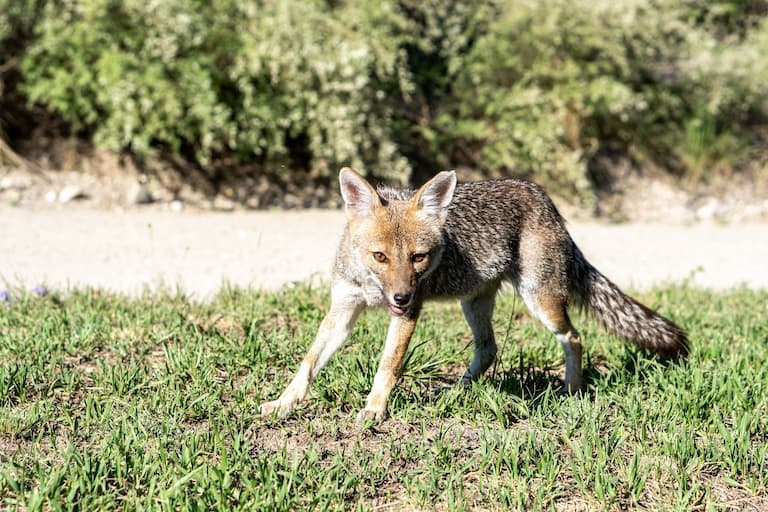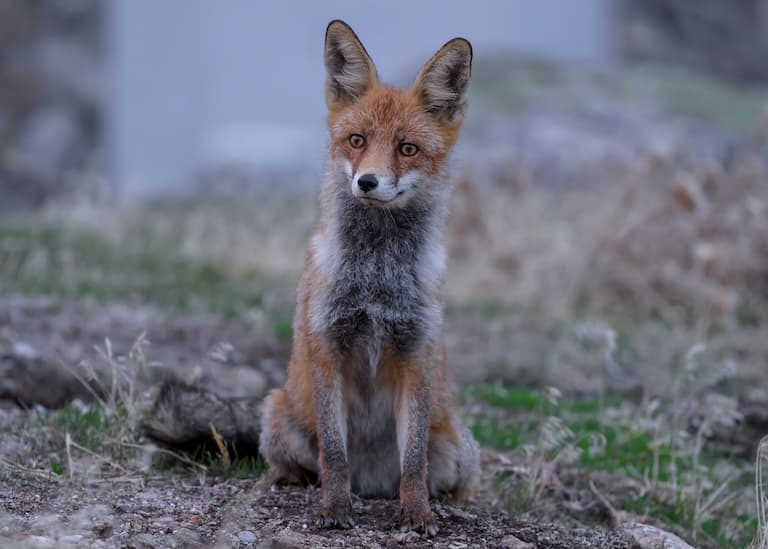Zorro Profile
In 1919, a fictional mischief called Don Diego de la Vega put on a mask and went around cutting the letter Z into the fools who tried to tell him what to do. Aside from being a bit of a jerk, he’s also quick, cunning and athletic, and therefore it’s no coincidence that his nickname Zorro means “Fox” in Spanish.
And in South America, where most Spanish-speaking people live, the animal, commonly known as the Zorro, Lycalopex has outlasted the fictional character by over 2 million years! Unfortunately, it’s not a fox at all, but a dog.

Zorro Facts Overview
| Habitat: Varied: | Mostly forests, also grasslands, coastal, mountains |
| Location: | South America |
| Lifespan: | 14 years |
| Size: | Up to about 45 cm long |
| Weight: | From around 3 kg up to 15 kg |
| Color: | Grey, reddish, brown, etc; depending on the species |
| Diet: | Mammals, birds, arthropods, bird eggs, reptiles, fruit and carrion |
| Predators: | Humans |
| Top Speed: | Swift, but not quantified |
| No. of Species: | 6 |
| Conservation Status: | Endangered to Least Concern |
Zorros are a great example of convergent evolution, having occupied very fox niches by developing very foxy behaviours and appearances, whilst being not very foxy at all in their genetic makeup.
They’re closer to wolves and Jackals in that regard, and of the six, five are still doing alright. Unfortunately, habitat loss, persecution and their low-density populations do not bode well as factors in their continued survival, but having been domesticated before, perhaps one day they will rise again!
Interesting Zorro Facts
1. They’re South American Jackals
Despite the name, zorros aren’t true foxes, and are closer to wolves and jackals. They’re members of the Canini tribe, where foxes – members of vulpine – diverge from dogs and do slightly different things.
But even the Canini tribe branches out into two separate lines, where, at the convoluted ranking of “subtribe”, Old World and New World Canines differ too.
In General, the Canina subtribe is home to all the non-fox canids in Europe and Africa, and the Cerdocyonina subtribe makes up the American species. So, the members of the zorro genus Lycalopex are true native Americans.

2. There are six of them
There are size extant species described, all from South Ameirca. Some, like the Culpeo, have a tremendous range, all the way from Peru top Patagonia, and others are very humble, such as Lycalopex fulvipes, or Darwin’s fox, whose endangered populations are limited to a couple of small islands and tiny patches of forest.
Today, all species are limited to the Southern two-thirds of the continent, but they would have been more widespread in the past. A couple of key characteristics in these animals have led to their reduction in numbers.
3. They’re solitary
Unlike the most well-known dog species (and, incidentally, much more like most fox species), zorros are primarily solitary. This means they don’t cluster in large groups, and can be found in lower densities than more social animals.
Their ranges, while they can be very vast, are therefore not packed full of individuals and their populations can still be quite small.
This works out well for a secretive animal that’s well adapted to the environment, until they come into conflict with a very destructive animal that isn’t.

4. They kill things
Zorros are omnivorous, but being fox-like, they’re also brutal killers. Rodents, birds, rabbits, lizards, insects, carrion and even flamingos and vicuña are on the menu, and as you can imagine for an animal this diverse in its slaughter, a baby sheep wouldn’t go amiss either.
Unfortunately, baby sheep in South America are almost entirely under the rule of the human population, who don’t take kindly to anything else killing them before they do.
Take the cupleo, for example: while its population is still big enough to be of least concern, in regions where its habitat overlapped with that of the sheep farmers, they have been hunted and poisoned until there aren’t any left.
5. They’re also killed
Darwin’s’ fox has suffered far worse. This is perhaps the most specialised of the six species, being an obligate forest species – and this makes it particularly vulnerable.
But being a crafty little zorro, its diet is promising. This species is also one of the most omnivorous and flexible with what it can eat, and while it’s no less of a killer than the other zorros, it will happily eat fruit and insects.
This cute little canid was one of Charles Darwin’s own samples1, back from a time when hitting animals over the head was the best way to protect them. Darwin himself writes that it was so curious and unafraid, he was able to walk right up behind one and brained it with his rock hammer.
Those were the days.
6. But they seem to be pretty chilled out
Zorros aren’t just cool with hammer-wielding naturalists, they seem to be pretty relaxed in each other’s company, too. They’re said to not be all that territorial, and will overlap with one another with very little fuss.
Different species will receive far less of a welcome, though, and the culpeo is said to restrict the grey fox from the best feeding grounds in areas where the two animals’ ranges overlap2.
Still, fighting appears to be rare, and these foxes tend to be very tolerant of one another’s independence.

7. They’ve been wiped out in some places
Despite being cute and only a bit of a pest, a third reason for the persecution of these animals is that they’re wearing our jackets!
In Argentina, their fur is valued as a durable and soft material, and this may well be the more realistic reason so many were killed there. The formal justification was that they were sheep killers, and so in the ‘50s, a bounty was put on their heads.
This bounty was presumably a lot less than the value of the fur, and was a convenient way to get locals to bring them in. But given their low population densities, within a few years, they were pretty much locally extinct.
8. Some were domesticated
Humans have also taken a very different route with some species in the past.
The Fuegian dog was essentially a domesticated culpeo, which is really cool, though it’s said they were only a bit domesticated and generally better considerd to be a sort of mostly-wild companion animal in a mutualistic arrangement with local tribes3.
Unfortunately, this latter point meant that the dogs didn’t really care all that much for their human community members and just sort of sat by and watched as the Spaniards geocided them.
Not content with wiping out the local human populations, the colonisers then set to work geocoding the dogs, too, in case any were still trying to help the local hunt. By the 20th century, they’d succeed and the Fuegian dog is now completely extinct.
However, genetic research shows that some of these zorro species have been domesticated multiple times over the years, independently4. So perhaps someone will do a better job of it in the future.
Zorro Fact-File Summary
Scientific Classification
| Kingdom: | Animalia |
| Phylum: | Chordata |
| Class: | Mammalia |
| Order: | Carnivora |
| Family: | Canidae |
| Genus: | Lycalopex |
| Species Name: | 6 Species |
Fact Sources & References
- Frank Li , “Darwin Knocked a Fox On Its Head During his Voyage, and We Now Call the Fox Darwin’s Fox”, Medium.
- Zapata et al. (2007), “Food habits and resource partitioning between grey and culpeo foxes in southeastern Argentine Patagonia”, Studies on Neotropical Fauna and Environment
. - Jaksic & Castro (2023), “The identity of Fuegian and Patagonian “dogs” among indigenous peoples in southernmost South America”, Revista Chilena de Historia Natural.
- Zangrando and Borrero (2022), “A pre-European archaeology in Malvinas/Falkland Islands?”, The Journal of Island and Coastal Archaeology.
